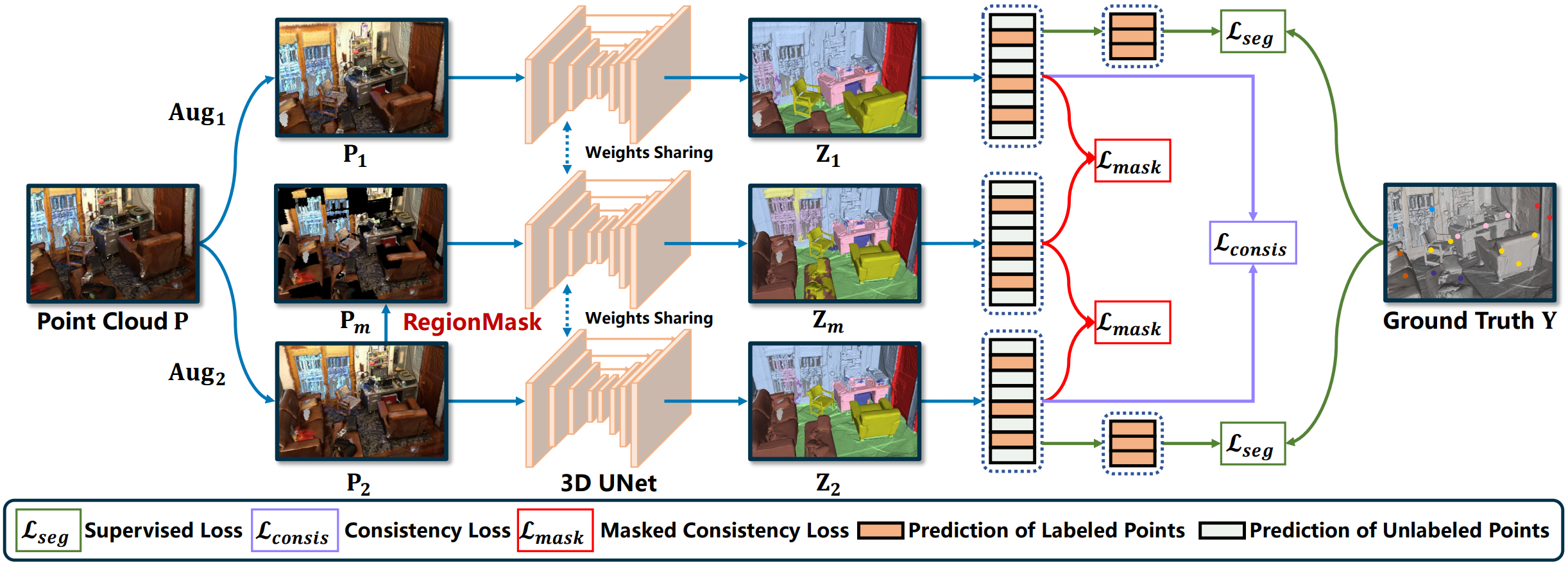CPCM: Contextual Point Cloud Modeling for Weakly-supervised Point Cloud Semantic Segmentation
We study the task of weakly-supervised point cloud semantic segmentation with sparse annotations (e.g., less than 0.1% points are labeled), aiming to reduce the expensive cost of dense annotations. Unfortunately, with extremely sparse annotated points, it is very difficult to extract both contextual and object information for scene understanding such as semantic segmentation. Motivated by masked modeling (e.g., MAE) in image and video representation learning, we seek to endow the power of masked modeling to learn contextual information from sparsely-annotated points. However, directly applying MAE to 3D point clouds with sparse annotations may fail to work. First, it is nontrivial to effectively mask out the informative visual context from 3D point clouds. Second, how to fully exploit the sparse annotations for context modeling remains an open question. In this paper, we propose a simple yet effective Contextual Point Cloud Modeling (CPCM) method that consists of two parts: a region-wise masking (RegionMask) strategy and a contextual masked training (CMT) method. Specifically, RegionMask masks the point cloud continuously in geometric space to construct a meaningful masked prediction task for subsequent context learning. CMT disentangles the learning of supervised segmentation and unsupervised masked context prediction for effectively learning the very limited labeled points and mass unlabeled points, respectively. Extensive experiments on the widely-tested ScanNet V2 and S3DIS benchmarks demonstrate the superiority of CPCM over the state-of-the-art.
PDF Abstract ICCV 2023 PDF ICCV 2023 Abstract




 ScanNet
ScanNet
 SemanticKITTI
SemanticKITTI
 S3DIS
S3DIS